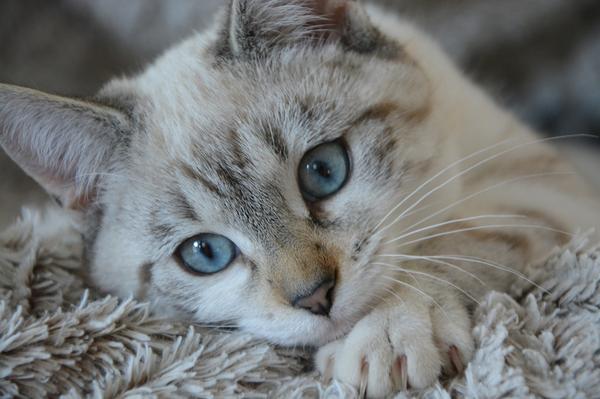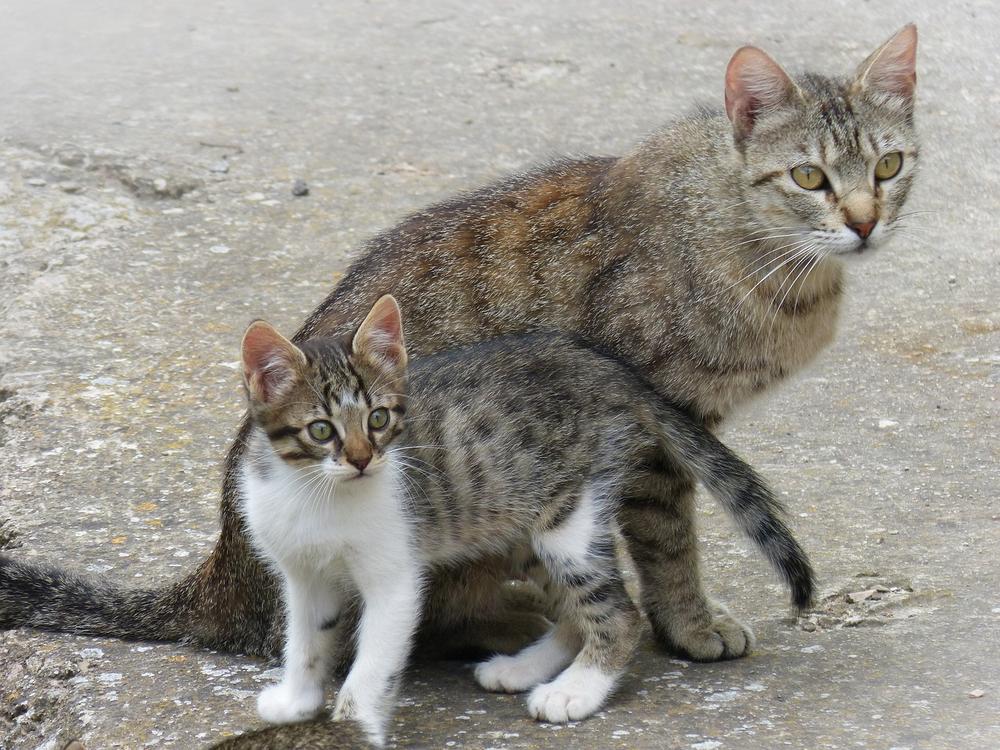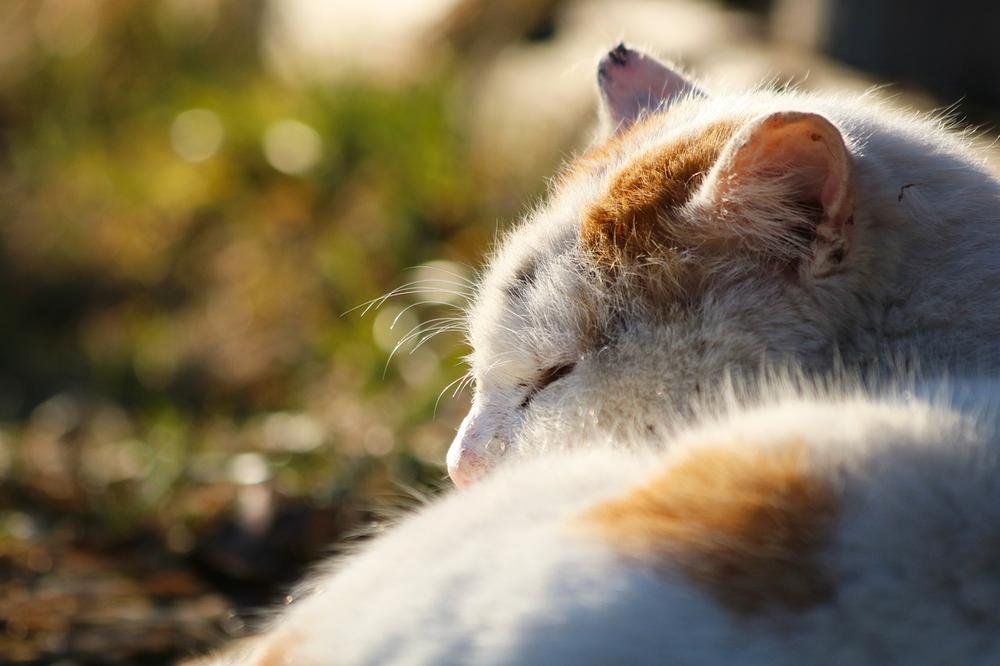Should I Change The Bedding After My Cat Gives Birth?

Imagine this:
You're standing in your living room, anxiously watching your cat give birth to a litter of tiny, defenseless kittens. 😮
The room is filled with concern for their health and safety.
Should you change the bedding?
Let's find out.
Signs That Bedding Needs to Be Changed

If you notice these signs, it's time to give your cat some fresh bedding:
- If the mother cat seems uncomfortable or restless, it means the bedding needs a change.
- When the kittens start coming out, that's when you know the bedding needs a switch-up.
- Make sure to swap out the blankets every day, especially in the first few weeks, to keep things clean and hygienic.
- If there's any pee, poop, or blood messes, don't wait, change the bedding ASAP. A clean environment is crucial for mama cat and her babies' health.
- During the postpartum period, try to switch out the bedding at least once a day, or immediately if it gets dirty or smells bad.
- Keep an eye on your cat's behavior and watch out for signs of discomfort. This will let you know exactly when it's time for a bedding change.
- In the first week after giving birth, change the bedding every day. In the next two weeks, switch it up every other day.
- If your cat starts nesting and looking for a quiet spot, it means she's getting ready to have her babies.
- Panting, meowing, finding a cozy position, and having stronger contractions are all signs that your cat is actively going into labor.
- It's normal to see some bloody discharge from the cat during labor.
Providing careful attention to these indicators will guarantee that your feline and her offspring have a cozy and sanitary accommodation. 😺
Understanding the Importance of Clean Bedding
Keep the bedding clean so mother cats and their kittens stay healthy. Here's what you need to know:
- Change the bedding regularly to avoid infection and keep everyone safe.
- Keep the litter box and feeding area clean by cleaning and disinfecting them.
- Make sure the mother cat has her own litter box for breastfeeding, so she and the kittens have privacy and comfort.
- Wait for 48 hours after birth before changing the bedding, so the mother cat can bond with her newborns.
- Wash the bedding thoroughly at least once a week, especially if it's dirty, to prevent bacteria buildup and infections.
- Create a cozy and peaceful environment with warm, dry bedding and give the mother cat and her kittens their own private space to thrive.
By adhering to these straightforward recommendations, you will create a secure and hygienic setting that encourages the health and happiness of both the mama cat and her darling offspring.
And if you're wondering about the curious case of a cat without whiskers, I've written a comprehensive guide just for you.

In my article, you'll find all the answers you seek and put any uncertainties to rest.
Discover the fascinating world of cats and their whiskers in my Cat Without Whiskers blog post.
Exciting adventures await!
Optimal Bedding for Newborn Kittens and Postpartum Cat

When it comes to bedding for newborn kittens and a postpartum cat, you want to ensure you have the best setup possible. Here are some important tips and details:
- Choose soft and absorbent materials like towels and blankets for bedding. These will provide comfort for the kittens while also soaking up any fluids.
- Avoid loose substances such as hay or straw. Stick with materials that are soft and absorbent to ensure a cozy environment.
- Don't use scented bedding. This can disrupt the cat's sensitive sense of smell and cause unnecessary stress.
- Keep the bedding warm and dry to create a comfortable birthing environment. Consider using a cardboard box as a birthing box and make sure there is a hole for the cat to enter.
- Set up a kittening box with a litter tray nearby. This will give the mother cat a designated space for taking care of her kittens and help with sanitation.
- Provide food and water nearby during delivery. The mother cat will need nourishment throughout the process.
- Serve fresh meals to meet the increased caloric requirements of the mother cat. She needs extra nutrients during this time.
- Prepare formula just above room temperature for the kittens. It should be warm enough to mimic their mother's body temperature.
- Ensure the mother cat's diet during pregnancy is high in fat and protein. This will support her health and the development of the kittens.
- Take safety precautions like not leaving the cat alone during birth if she is allergic to cat litter, refraining from moving the bedding for 48 hours after birth to promote bonding, monitoring the cat's actions during placenta consumption and kitten cleaning, avoiding disturbances or separations in the initial days to allow relaxation and bonding, changing the litter box after birth, changing the bedding daily for the first week, and keeping other animals away to protect the mother cat and her kittens.
Following these tips will ensure a comfortable and safe environment for newborn kittens and their postpartum cat.
What if Something Goes Wrong?
When a cat is giving birth to her kittens, you must keep in mind that anything can happen.
While it's good to hope for the best, you should also be ready for any emergencies that might come up.
To help you handle any unexpected complications during the birthing process, here are some practical tips:
- Make sure you have the contact information of your vet and keep it easily accessible. You never know when you might need their help.
- Watch closely how the mother cat acts during feeding time. It can give you important hints about her overall health and well-being.
- Be careful when cutting the umbilical cord of the kittens. Take your time and make sure to do it gently so you don't cause unnecessary pain.
- Normally, the kittens will arrive within a few hours of the active labor starting. After that, they usually keep coming every hour or so.
- If you notice any signs of distress in either the mother cat or the kittens, don't hesitate to get in touch with your vet for assistance.
- Keep an eye on the mother cat and regularly check her temperature. If it drops too low, contact your vet immediately.
- Let the mother cat decide whether she wants to move her kittens in the first few days. Try not to handle or move them yourself unless it's absolutely necessary.
- Create a safe environment by keeping toxic plants, foods, and substances out of their reach. Also, make sure to provide them with enough food, water, and love.
- It's fine to let male cats be around, but always supervise them when they're near newborn kittens.
- Before giving birth, let the mother cat choose where she wants to have her kittens. Just keep an eye on her from time to time without interfering too much.
- Always have the contact information of your vet close by in case you need any veterinary care or have health concerns about the mother cat or her kittens.
- Wait until the kittens are fully weaned before giving them any vaccinations. And remember, never give them any medication without a proper prescription.
- To be prepared in case the mother cat doesn't produce enough milk or for visits to the vet, have some kitten formula and a pet carrier ready.
You can guarantee the mother cat and her kittens' health and well-being by being ready and knowledgeable.
Now that we have covered what to do if something goes wrong during the birthing process, let's move on to another important aspect - changing the bedding...
How Do I Change the Bedding in Cats Nest?
When changing the bedding, you need to wait for the mother cat to temporarily leave the nest. This prevents any disruptions or potential aggression.
Only remove the soiled blanket and replace it with clean ones once the queen has finished delivering all her kittens. Make sure not to disturb the mother cat while changing the bedding.

It is advisable to wait for at least 24 hours before making any changes.
This allows ample time for the mother and her kittens to form a strong bond. During this period, some mother cats may exhibit protective behavior and may not appreciate any interference.
Therefore, your patience and respect for their needs are crucial. Gather gentle and caring items like clean towels, sheets, and blankets for when you eventually change the bedding.
Remember to handle the cat and her kittens with utmost gentleness throughout the entire process.
Keeping Your Cat's Bedding Clean and Fresh
Key Takeaways:
- Change the bedding when the kittens start to emerge.
- Blankets should be changed daily, especially in the first few weeks.
- Bedding should be changed as soon as possible after the kittens are born and daily if there are spills.
- Replace bedding at least once a day during the postpartum period or immediately if soiled or has a foul odor.
- Monitor behavior and signs of discomfort to know when bedding needs to be changed.
- Change bedding every day for the first week, then every other day for the next two weeks.
- Pay attention to feline cues for when a clean space is needed.
- Look for common signs of cat pregnancy such as changes in behavior or appearance.
- Provide a quiet and safe place for the cat to have her kittens.
- Active labor for cats includes panting, meowing, settling into a comfortable position, and experiencing stronger contractions.
- It is normal to see blood-stained vaginal discharge during a cat's labor process.
- Failure to change bedding can compromise hygiene and put newborns at risk.
- Regularly clean and disinfect the litter box and feeding area.
- Provide a separate litter box for the mother cat to breastfeed in.
- Thoroughly wash bedding at least once a week.
And that wraps up today's article.
If you wish to read more of my useful articles, I recommend you check out some of these: Did I Put My Cat to Sleep Too Soon, How to Give a Cat Saline Nose Drops, Why Are My Cats Whiskers So Short, Why Is There a Black Spot on My Cats Nose, and My Cat Is Not Eating Force Feeding Your Cat
Talk soon,
-Sarah Davis